 This article is sponsored by Clean Label Project. Opinions in this article are 100% my own.
This article is sponsored by Clean Label Project. Opinions in this article are 100% my own.
I don't know about you, but I have made several attempts at limiting my coffee consumption for health reasons. From wanting to sleep better at night, to just managing my vices, I am certain I am not the only one who has decided to make a switch from the caffeine rush.
But I know there are plenty of individuals out there who make the switch from caffeinated coffee to decaf because of health reasons. Whether that means having an autoimmune issue, cardiovascular issue, high blood pressure, or because they are pregnant—there are many individuals who switch to decaf because of a health-related lifestyle change.
If you are in this boat and are considering decaf coffee to live that caffeine-free lifestyle, you may want to think twice about that.
There is new evidence that a particular process to decaffeinate coffee beans may involve chemical solvents you may not want to be ingesting in which case could lead to health issues rather than health benefits.
Do You Know How Your Coffee is Decaffeinated?
I never put much thought into how coffee is decaffeinated but found the process to be pretty interesting.
There are two major ways to decaffeinate coffee: water-based vs. solvent (chemical) based. The water-based decaffeination process involves heating the beans in hot water until the caffeine is separated out from it.
While this process is more time consuming, it is the healthiest way to go about removing caffeine from coffee beans.
The other way uses a chemical solvent, Methylene Chloride, to decaffeinate coffee beans. Similar to the first method, the chemical solvent is heated to a certain temperature to remove caffeine from the beans.
But here is the kicker…
Methylene Chloride is also an active ingredient in paint removers that was recently banned in 2019 by the Environmental Protection Agency (EPA) after linking this harmful chemical to cancers, cognitive impairment, asphyxiation, and liver, kidney and reproductive toxicity.
However, the US Food and Drug Administration (FDA) currently allows this chemical to be used in the decaffeination process. And to make matters worst, it does not require them to disclose this process on food labels.
Which Brands Use The Paint Stripper Chemical?
Luckily, Clean Label Project investigated to see if methylene chloride was showing up in the decaf coffee products that people purchase.
After testing 25 popular brands of coffee, they discovered that 10 of those detected Methylene Chloride chemicals in the coffee. See the list of brands they tested below.
What's most disturbing about this is the fact that there are so many vulnerable populations who drink decaf coffee such as pregnant women, people with heart conditions, and the elderly. To expose these populations to a chemical that is linked to so many other health conditions is appalling.
Luckily, I am happy to report that the Clean Label Project is doing its part to make sure that these very harmful ingredients are being displayed on the label of the foods.
What's Being Done About It
The Clean Label Project filed lawsuits against five of the largest coffee brands for including methylene chloride, in decaffeinated coffee products.
The lawsuits were filed against AmazonFresh, LLC, J.M. Smuckers' Café Bustelo, Peet's Coffee & Tea Holdco Inc., Keurig Green Mountain, Inc., and KraftHeinz Maxwell House. What's worse is that these brands claim that their decaffeinated coffee products are “pure and natural.” So they are very misleading on their labels.
If you've never heard of them, Clean Label Project’s mission is to raise awareness about the presence of potentially dangerous environmental contaminants and toxins in everyday consumer products.
This important organization believes that a serious conversation needs to be had with brands and regulatory bodies on the presence of these contaminants in consumer products. And they are actively working to hold these organizations accountable.
What You Should Do About It
Although Clean Label Project is leading the way with holding things brands accountable, there is still more you can do to make sure you are ingesting toxic chemicals in your morning brew.
1. Read Labels
If you are unsure of what your decaf process is for the brand of coffee you drink, there are some keywords you can look out for. Words such as “solvent-free”, “chemical-free”, “Swiss-water process”, or “certified organic” are all great indicators that your decaf coffee is chemical-free and okay to drink. If you are still not sure, you may want to go on to step #2.
2. Contact Your Brand
You can contact your favorite brands of coffee to ask them about their decaf process. Clean Label Project has a list of top brands on their site here along with their phone numbers so you know where to call. Click here to see the list.
3. Talk To Your Doctor
If you learn that you have ingested methylene chloride, talk to your doctor to see what steps if any you should take about being exposed to this very harmful chemical.
It is awful that this is something that decaf coffee drinkers now have to worry about, but it is better to know rather than not.
If you are interested in learning more about the Clean Label Project and seeing how you can get more involved in their organization click the link below to get involved!
You can also follow them on social media below:
- Facebook: https://www.facebook.com/CleanLabelProject/
- Instagram: https://www.instagram.com/cleanlabelproject/
- Twitter: https://twitter.com/thecleanlabel
Resources

The post What’s Really In Your Cup Of Decaf? appeared first on Miss Millennia Magazine.
from Miss Millennia Magazine
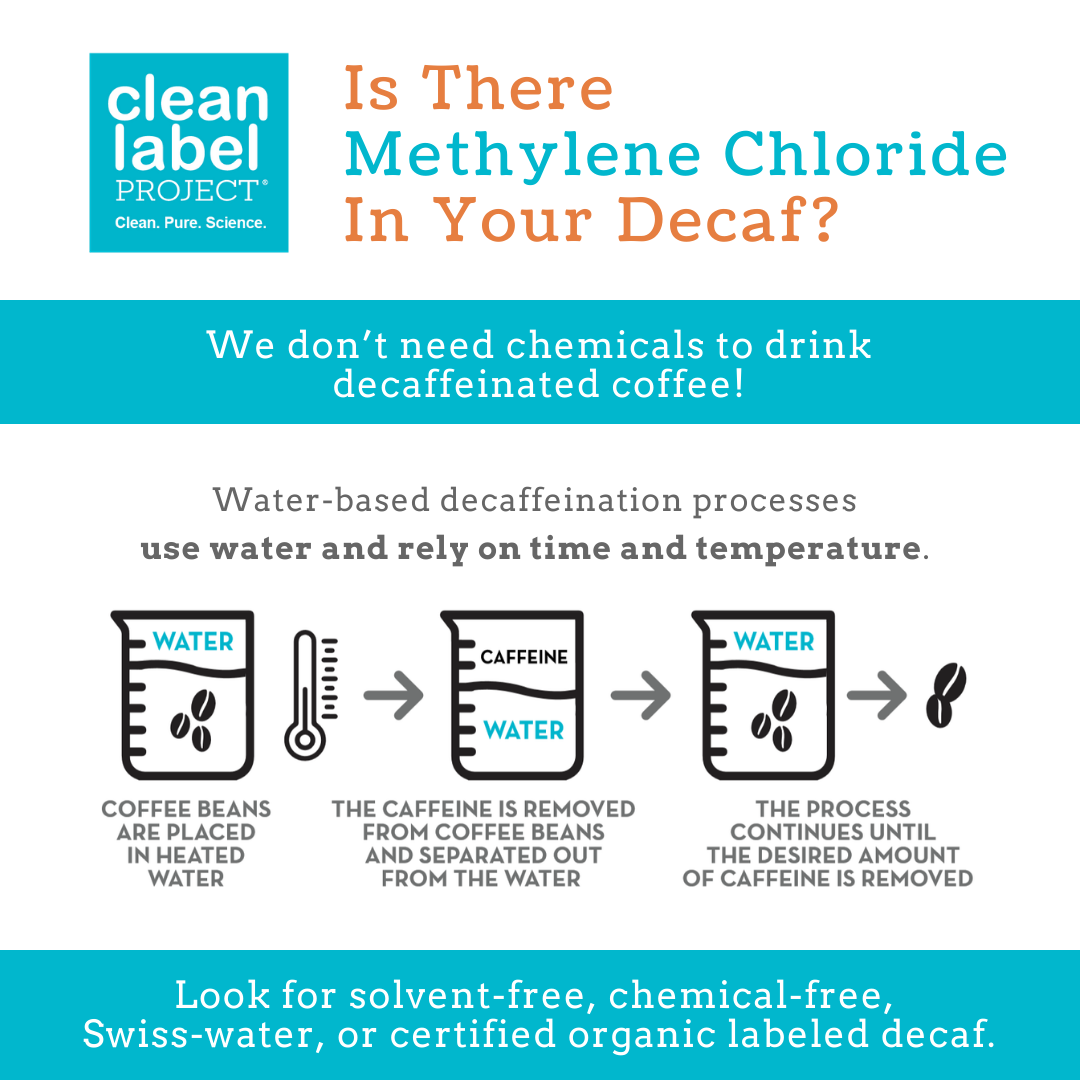
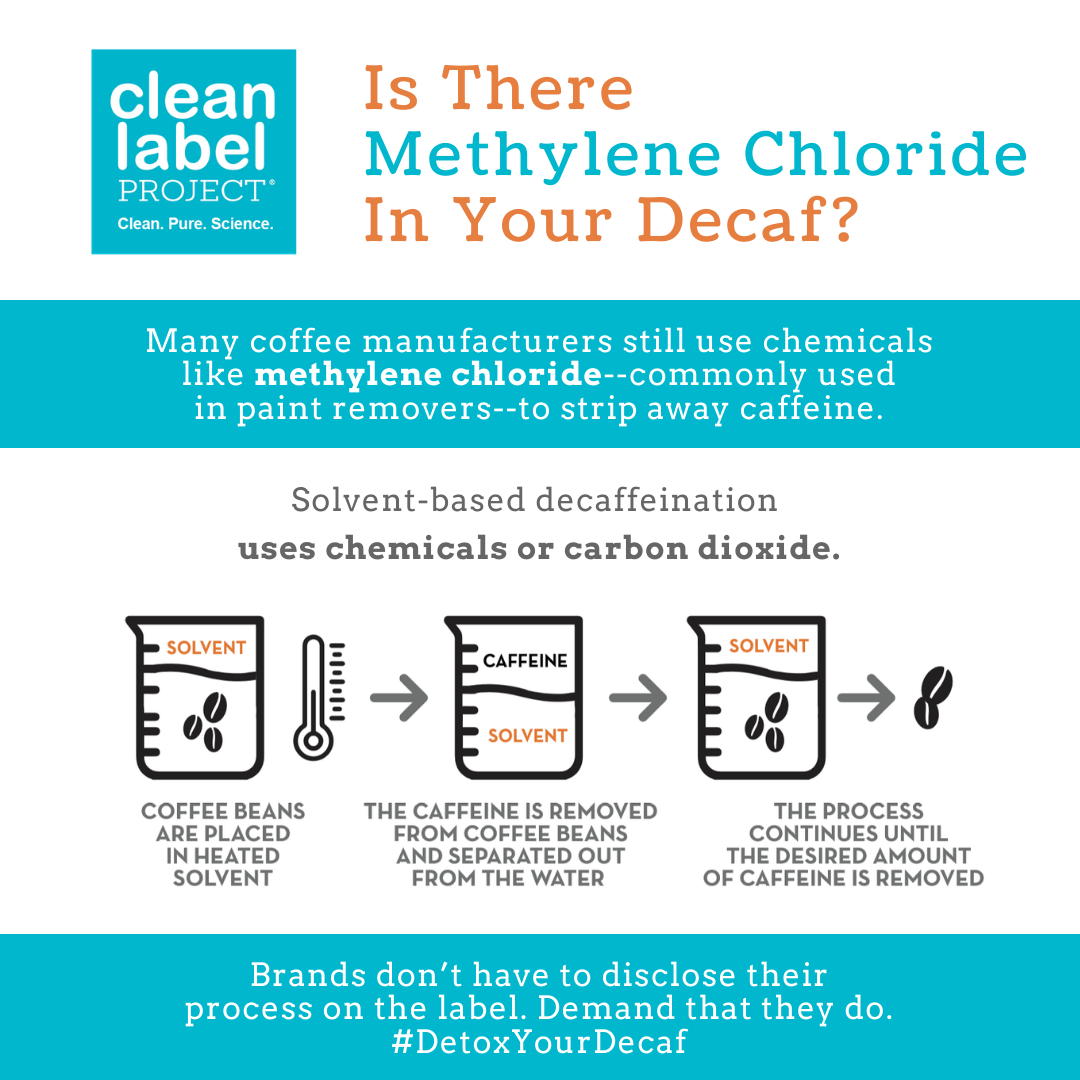
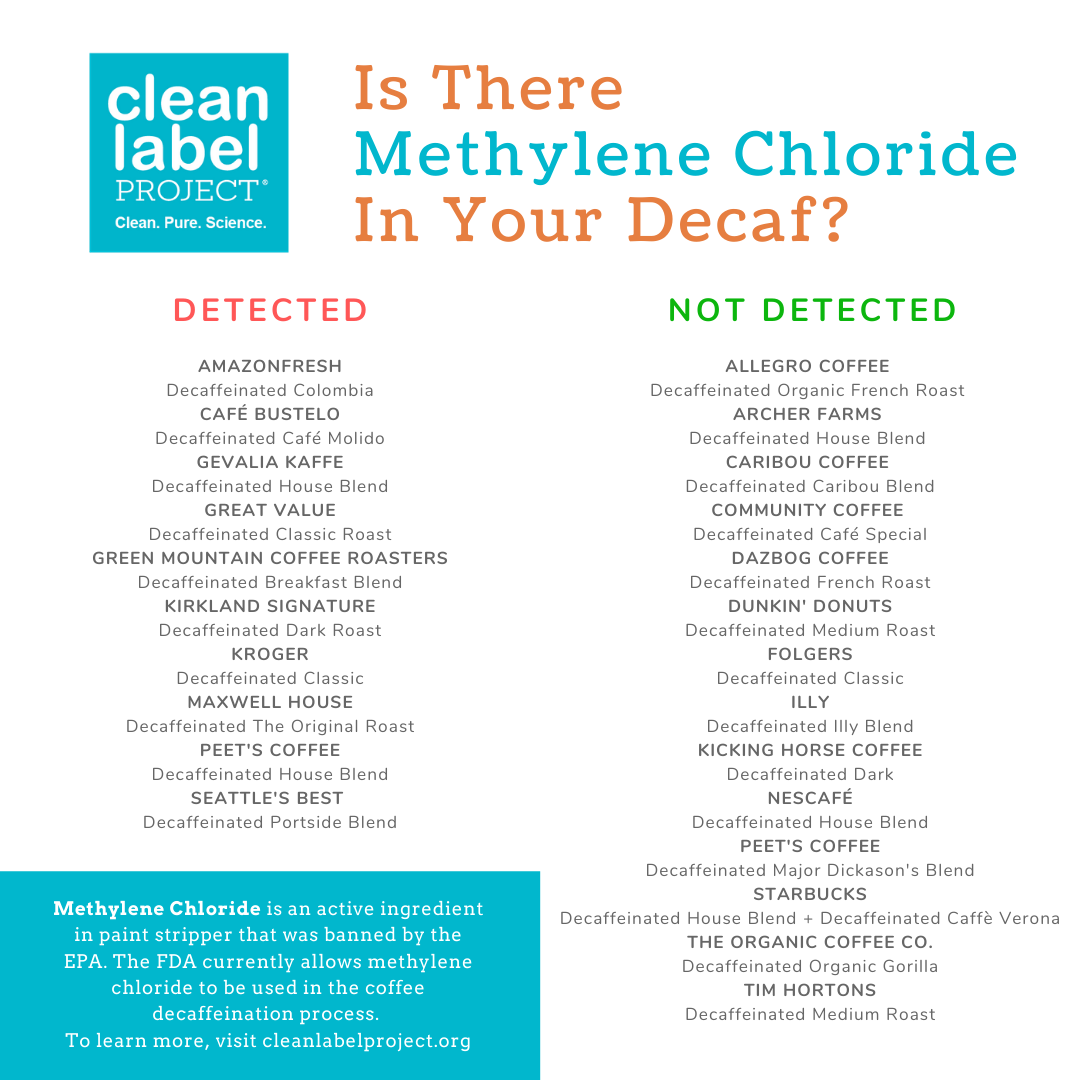
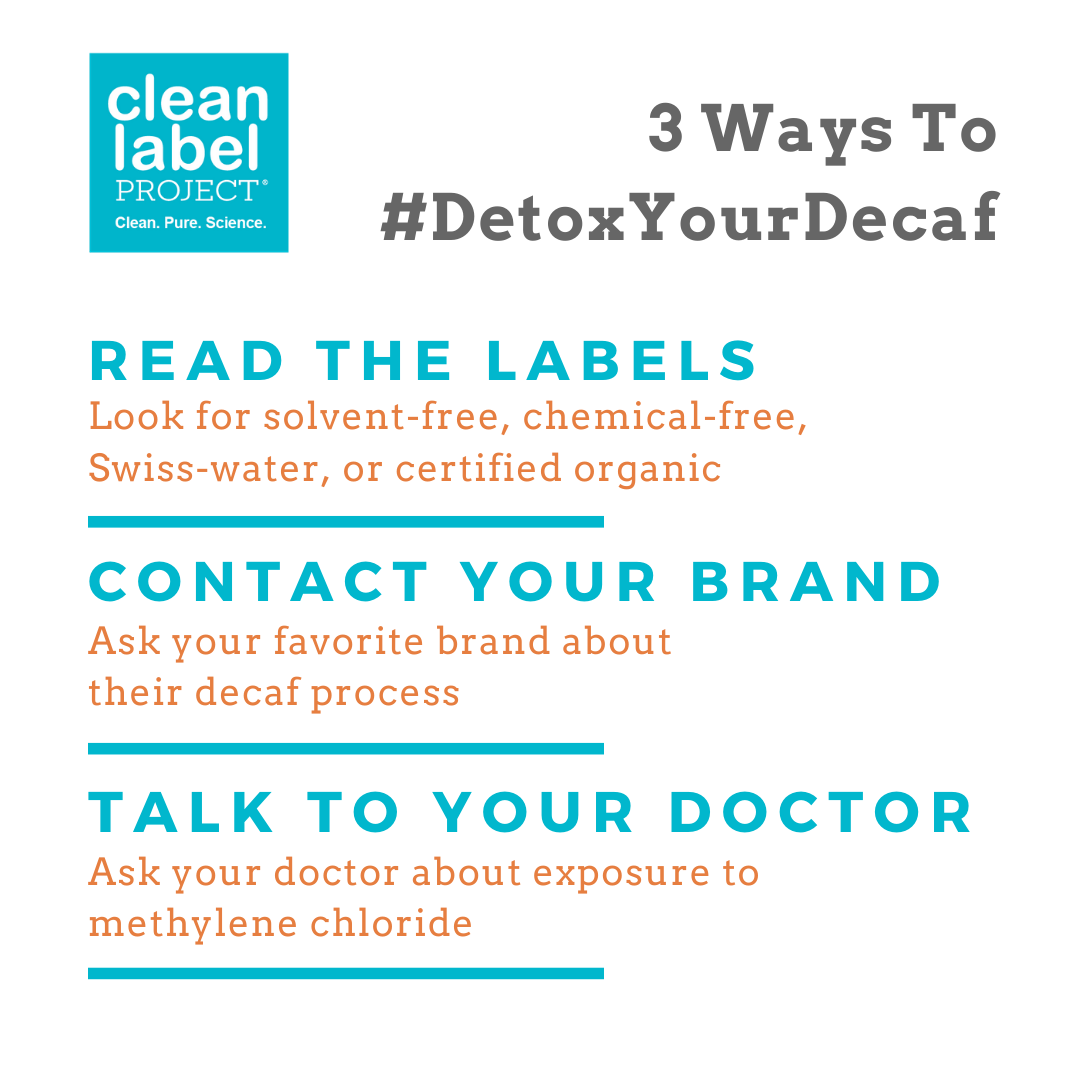
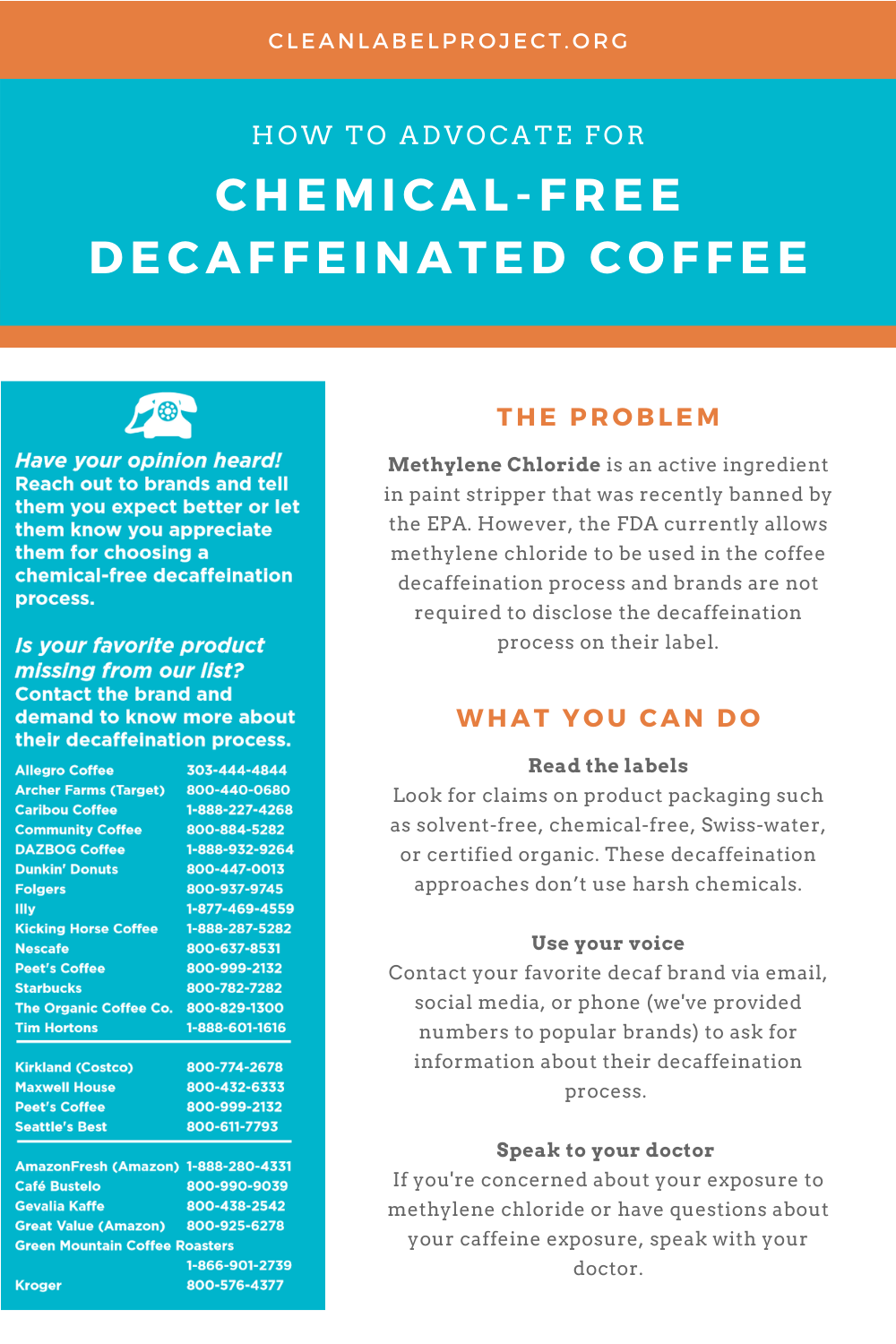


0 Comments